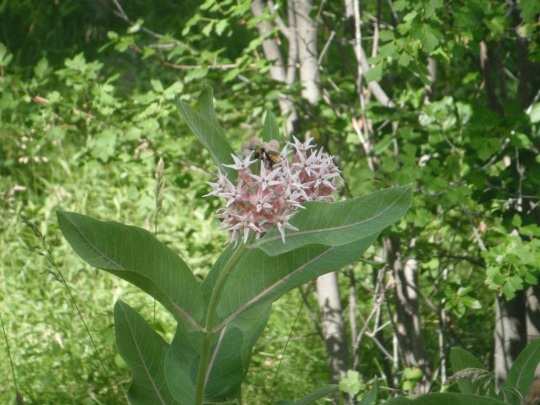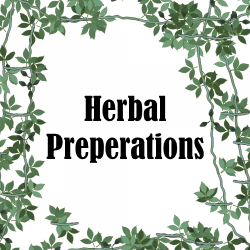Showy Milkweed
(Asclepias Speciosa)


Photographs Courtesy Liz Nunn © 2011
Showy Milkweed (Asclepias Speciosa):
Belonging to the milkweed family, like all milkweed it has a thick white milk like sap. The individual will have one to several erect stems reaching a height of 2 to 5 feet at flowering. With large oval leaves, gray green in color, usually 4 to 7 inches long and have fine hairs on the underside. Leaves are opposite each other attached directly to the stem, with a distinctive midrib.
Flower:
Found at the end of the stem. Flowers are very fragrant, with 5 pedals,ranging from deep pink to purple in color. Flowers will be in ball like clusters located at the top of the stem. Fruits are pod-like that split open in the Fall. Seeds are hairy tuffs that become airborne.
Distribution:
Showy Milkweed can be found growing in clumps growing along side roadbeds and abandond farmlands. Although members of the milkweed family can be found growing throughout the U.S. the Showy Milkweed, with the exception of Arkansas, Missouri, and Louisiana, can be found west of the Mississippi River.
Usages:
This is one of the plants that we will go into more detail than usual due to the fact that it has so many uses in a survival situation. Here is evidence that Milkweed, especially Showy Milkweed has been widely used by indigenous peoples since long before written history. It's been used as a medicine, as a food, and the fiber has had many uses. Milkweed fibers have been identified in prehistoric textiles in the Pueblo regions. Milkweed fibers are still used by the Tewa speaking people of the Rio Grande and at Zuni Pueblo. The Tewa Pueblo peoples use the Milkweed fiber in the making of string and rope. The Zuni peoples use the fibers to weave into fabric. Pueblo peoples also used the Milkweed as a food. Harvested in late fall, the milkweed stalks were split open to release the tough fibers. The fibers were released by rubbing between the hands and then drawing the fibers over a hard surface. Once this step had been completed the cordage was formed by twisting the fibers together. This process was accomplished by rolling the fibers on the thigh while at the same time twisting them together.
• Fibers made into cordage that is used to making of string and ropes.
• Cordage used in the making of nets.
• During World War II, the silky down attached to the seeds of milkweeds was used to stuff pillows, life jackets and flight suits. The down is 5 to 6 times more buoyant that cork.
• The silky seed fibers are spun on a hand-held wooden spindle and made into yarn and woven into fabric.
Usages:
This is one of the plants that we will go into more detail than usual due to the fact that it has so many uses in a survival situation. Here is evidence that Milkweed, especially Showy Milkweed has been widely used by indigenous peoples since long before written history. It's been used as a medicine, as a food, and the fiber has had many uses. Milkweed fibers have been identified in prehistoric textiles in the Pueblo regions. Milkweed fibers are still used by the Tewa speaking people of the Rio Grande and at Zuni Pueblo. The Tewa Pueblo peoples use the Milkweed fiber in the making of string and rope. The Zuni peoples use the fibers to weave into fabric. Pueblo peoples also used the Milkweed as a food. Harvested in late fall, the milkweed stalks were split open to release the tough fibers. The fibers were released by rubbing between the hands and then drawing the fibers over a hard surface. Once this step had been completed the cordage was formed by twisting the fibers together. This process was accomplished by rolling the fibers on the thigh while at the same time twisting them together.
• Fibers made into cordage that is used to making of string and ropes.
• Cordage used in the making of nets.
• During World War II, the silky down attached to the seeds of milkweeds was used to stuff pillows, life jackets and flight suits. The down is 5 to 6 times more buoyant that cork.
• The silky seed fibers are spun on a hand-held wooden spindle and made into yarn and woven into fabric.
Food:
Most Native Americans have and some still use Milkweed as a food. Immature shoots, new leaves and stems, immature seed pods and the silk can all be prepared and eaten as any vegetable. Many people claim Milkweed to be bitter and in some cases toxic. I think this depends on the type of Milkweed as well as the soil it has grown in. I have failed to find anyone that has actually eaten milkweed that has gotten sick or has found it to be bitter. As I stated before it is a fact that Native Americas used Milkweed as an important food source. Although this article is about the Showy Milkweed the Common Milkweed should be harvested and prepared in the same manner.
• The best time to begin harvesting Milkweed is in late spring. This is when the new shoots will begin showing up. You will be sure that these are Milkweed shoots by the presents of last year's dead milkweed stalks in the area. These new shoots will look a lot like asparagus spears, however, unlike asparagus spears Milkweed shoots will have small leaves in opposing pairs, these leaves will be hugging the stems. These shoots are best when harvested at a height of four to eight inches. You simply boil them as you would any other vegetable. Once the plant has matured you can harvest the top six inches of the stalk and prepare in the same way.• The young immature green leaves are prepared in the same manner as any other green vegetable. You do not have to change the water after boiling, however if you prefer a single change of water will hurt nothing.
• Beginning in mid to early summer the flower buds will first begin to appear. Depending on your location these buds can be harvested from six to eight weeks. This can be used as any vegetable – boiled, fried, in soups and stews and etc.
• Again, depending on your location the seed pods will begins appearing in late summer early fall. These are harvested while still immature, from two to three inches long. The seeds and silk inside should be soft, white with no browning. The seed can be used as any other vegetable in same way as the flower buds.
• Although I have never tried it myself, I am told the silk can be used in a similar manner as cheese. When boiled in a stew or soup it is said to taste and act a lot like cheese. Like I said I have never tried this but it is on my list of things to do this Fall.
• The young shoots, stems, flower buds, immature fruits, and roots of Showy Milkweed were boiled and eaten as a vegetable by various indigenous groups of eastern and mid-western America.
• In some areas the young leaves and stems were used as greens.
• The flowers were also eaten raw or boiled
• The buds were boiled for soup or with meat.
• One of the most common use for Showy Milkweed was in the making of chewing gum from the sap. This was accomplished when the white sap was heated slightly until it became solid, then added to salmon fat or deer grease.
Medical:
• Sap from the Showy Milkweed was used as both a cleansing and healing agent by many of the desert tribes. It was used in the treatment of sores and cuts.• The sap was used as a cure for warts and ringworm.
• A salve made from the seeds of the Showy Milkweed was used in the treatment of sores and cuts. In order to make the salve the silky hairs were burnt off the seeds and then the seed ground into a salve.
• A tea made from the seeds was used to draw the poison from a rattlesnake bite.
• The roots were mashed and moistened with water to make a poultice to reduce swelling
• A hot tea made from the roots was used as a cure for a cough
• It was used as a wash to cure rheumatism




